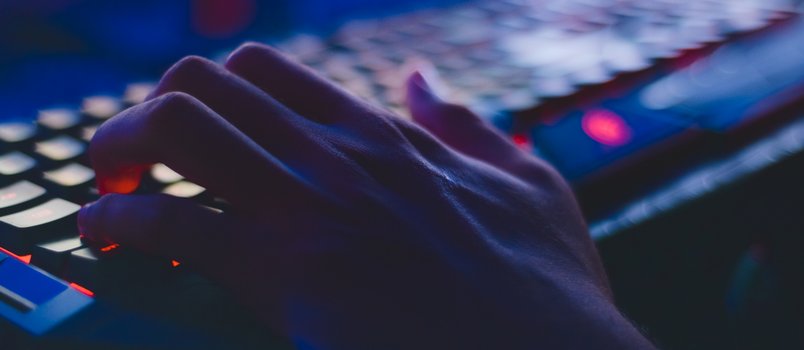When they say that there are two sides to each coin, the reality isn’t much different for the brands and the logo designers. But when it comes to the hiring the latter, a war wages. And it just isn’t any war; it’s a war where the champion designers have to prove their worth to win the brand’s offer.
Sounds familiar? This is the fable of logo design. Both the parties communicate in an interactive manner, where one puts all his efforts to deliver a responsive design for the brand to mark its identity in the niche industry. However, the logo design industry has moved from the old-age trade system to a new competitive level.
Each brand wants to surpass that competitive edge that its rivals are offering; for that reason, logo designers are required to come up with a compelling design that not only speaks for the brand but also adds timelessness as its utility. To seal their branding strategies, businesses approach the designers in a variety of ways, which include:
– Hiring a designer or a design company
– Using a DIY logo maker tool
– Running an extensive competition (aka crowdsourcing) to score the best logo design
Designers and logos are available everywhere, but only the brands who’re playing it big can afford professional logo designers. The reason is that a logo design requires intensive energy, work, and time on the part of the designer, which is why most raise the financial bar to add value to their skills and expertise.
But every brand needs a logo, right? Where most can’t afford expensive logo designs, they’re left with two common approaches. If you want the truth, both are a bit of a hit and a miss. Whether they use a DIY logo maker tool or run competitions for their desired logo, brands widely differ from the design professionals in their opinions and considerations. However, let’s first take a look at what pros and cons do both methods have and then view them from the designer’s eye for which one is better (yes, we’re going to weigh and compare them!)

What more could be better than a brand finally discovering the Holy Grail? The custom logo designs are offered by various design sites that cater to the needs and requirements of brands belonging to different niche industries. So let’s begin with the pros first.
The Pros
Not a designer? Don’t worry. You’re not obliged to have perfect software skills to use these because these online logo makers mostly operate via the integrated artificial intelligence (AI) technology.
The AI does all the hard work for you and displays the designs that are relevant to your business. Logo design websites, such as LogoDesign.Net, require basic information that includes your company name and industry niche and present more than +6000 designs to choose from.
Not only can you choose your preferred design but also can edit them to your heart’s content. If you’re still unsatisfied with those designs, you can request a customized logo for your business from the minds behind these websites. The best bit: These designs are available at affordable rates and guarantee the pitch you’re opting to deliver for your business. Plus, it saves you all the time and hassle for scouring the perfect designer and the design.
The Cons
Though the benefits are unlimited, the cons also exist for a reason. Your DIY logo generator might be the quickest, the most unique, and the most cost-effective solution for the perfect logo design. However, you might stumble upon some repetitive and redundant designs, the exact use of which can give off that unprofessional vibe.
Anyone opting for an affordable logo design would advance towards the logo that offers almost every feasibility. So, probably no one in their right mind would want to miss a chance like that. Unless you have a highly creative mind and a free-flowing imagination, getting one of those ubiquitous logos will make your presence quite subtle.
Don’t get us wrong, but your brand stands on the verge of losing its value if you don’t get over minor mistakes when using DIY logo maker sites. But look on the bright side; you can request your own customized logo too, isn’t it?

Crowdsourcing is often viewed as a one-way road. You don’t necessarily reinvent the wheel here but it’s a gray area. It’s all win-win for the brands, but the designers get kicked out of the ‘lucky’ team.
In case you didn’t know what crowdsourcing is, it’s a general competition held by the brands and organizations. It could be related to anything from designing the brand façade to designing the logo.
Since we’re talking about logos here, let’s narrow it down to the point. The designers participate and bid for the award or prize money offered by the brand. At the end of the competition, one winner gets to enjoy the prize money. And the other designers… they must’ve stepped on a crack or would’ve jumped over a black cat!
The Pros
Since brands get to reap most of the benefits of crowdsourcing, it is much of an all-in-one solution for them. There are many sites that allow the brands to crowd source for the preferred logo design and run competitions for a good reward as discussed above.
The companies that are tight on a budget and still need a good logo design approach these sites to avoid the costs of an expensive logo. They save their time and resources and boost their savings. With more and more people grasping the idea of crowdsourcing in design, it is gaining popularity on a larger scale and has contributed to the benefit of many. Plus, businesses also have a wide array of options to choose from. Each one is custom-made and tailored according to the brief they provide.
The Cons
The brands get to enjoy the advantages but the disadvantaged ones here are the designers. Though the businesses run the risk of being bombarded with all types of logo designs, crowdsourcing deprives the designers of their potential rights as professionals. Unless there are rules that govern a particular logo design competition, the usual crowdsourcing is filled with controversies. Hence, competitions like these cause an uproar in the design community.
The biggest drawback of crowdsourcing on the designers’ end is that only one logo design gets selected, while the other entries are discarded. For one moment, think from the designer’s perspective. Wouldn’t it be frustrating if you put in so much effort into a design and someone else get to bag that trophy? You won’t be delighted, will you?
You see, there may be many other competitions that broaden the scope and entertain entries from novices and experts alike. There are many other issues, such as the logo copyright issues and bidding process that can drain you of credit, time, and energy.
For this reason, most designers use rip-offs of other’s works and participate in the competition. They don’t tend to give their 100% because these competitions are a total gamble. Throw your design in the roulette wheel and watch your luck spinning with it!
Which Option Best Solves The Logo Design Dilemma?
When deciding where to find the perfect logo design, it’s best to consider your situation and the contextual factors. No matter which option you choose, you’ll find critics opposing your choice. So it’s best to admit that there are pros and cons to each option.
Take your cue from the examples you see around and learn from them. For instance, Richard Grefé, executive director at AIGA Eye on Design wrote an open letter to the Japanese Olympic Committee. The letter demanded an immediate action on the use of crowdsourcing competition by the Olympic community. Though the intentions of the community were oriented towards finding the best logo for the 2020 Olympics, the director felt the need to draw their attention to AIGA’s attitude towards crowdsourcing and spec work. He emphasized that the ethics of design were compromised, with the design community being neglected in the process.
With reference to the damage caused to the design community by crowdsourcing, the AIGA director delineated the cons of the open-call competition. Though the vision of the games is commendable, these competitions truncate the roots of actual talent in design.
The Final Verdict
So… we made it to the end. Since the pros and cons are laid out in the open, it isn’t hard to see which option is suitable for your niche. But it’s hard to pinpoint the balance that both the businesses and the designers can achieve via these logo design choices.
On one hand, you have the DIY logo maker sites and on the other hand, you have spec work. Again, advantages and disadvantages are a share of both, but let’s consider an approach that successes in exuding a formidable relationship between startups and the creative community.
If you compare and weigh the pros and cons of both the logo design options, the DIY logo design sites furnish you with the most favors which you can wish for most. If you’re a brand on a budget, have a tight deadline, and want to spare the least of time and expenses, constructing your own logo – with careful consideration of the cons – is the best-suited option for your needs.
And for that reason, you need to pay attention to the details in your niche and use your imagination to come up with something compelling and distinctive to your business.
But if you’ve got the resources, you can go for crowdsourcing sites and run the competition (keeping the AIGA guidelines intact). You can set some eligibility criteria along with clear instructions regarding the logo design process.
In the end, it’s hoped that you’re clear on what lies beyond the surfaces of DIY logo design sites and the crowdsourcing sites. The comparison is intended to simply guide you for choosing the right option and pave your way towards success.
Author Bio: Jennifer Stone is a devoted graphic designer who has dedicated her time and experience to logo designing. She keeps a birds-eye view of all the trending news on the logo design desk. Her hobbies are intertwined with her profession, which allows her to explore her love and passion for graphic design and that’s why she heads for random design on the internet and comes up with creative and easy-to-follow ways of graphic design creation. Jennifer is also unique in soaking up the inspiration from her environment like a quick study and it includes everything that is shaped into a design.





